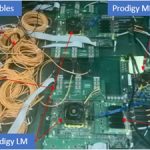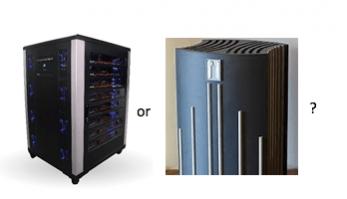When we talk about the Internet of Things (IoT), it isn’t a stretch to say that every intelligent device we interact with will become connected, sharing vast amounts of data with one another to make our lives more efficient. It isn’t only consumers of smart home, infotainment, and wearable technologies that are driving the demand,… Read More
Vertical Prototyping with Intel FPGAs
It has been an article of faith in the design tools business that there’s little to be gained from targeting market verticals because as far as tools are concerned, all verticals have the same needs. Which is good in some respects; you maximize the breadth of the market to which tooling can appeal. But in so doing the depth of contribution… Read More
Webinar: Achieve High-performance and High-throughput with Intel based FPGA Prototyping
FPGAs have been used for ASIC prototyping since the beginning of FPGAs (1980s) allowing hardware and software designers to work in harmony developing, testing, and optimizing their products. We covered the history of FPGAs in Chapter 3 of our book “Fabless: The Transformation of the Semiconductor Industry”, which includes … Read More
FPGA Prototyping Exposed
In case you missed it, the FPGA Prototyping for SoCs webinar happened last week. I did the opening ceremonies which I will run through briefly here or you can go straight to the replay HERE.
FPGA prototyping is one of the fastest growing market segments we track on SemiWiki which brings us to the topic at hand: FPGA Prototyping for SoCs… Read More
Cloud Provider Leverages FPGA Prototyping
Talking to customers is one of the best parts of being a semiconductor professional. It keeps you grounded and offers you the collective experience of some of the smartest people around the world, absolutely.
Webinar: The Emergence of FPGA Prototyping for ASIC/SoC Design
Customer success stories are a close second and interestingly… Read More
Webinar: The Emergence of FPGA Prototyping for ASIC and SoC Design
One of the more interesting markets that I cover is FPGA Prototyping. Interesting because it is fast growing ($150-250M) and interesting because it is all about design starts and design starts are the lifeblood of the semiconductor industry.
If you are interested in FPGA prototyping you might want to start with the 30+ S2C Inc blogs… Read More
Enhancing FPGA Prototype Debug
FPGA prototyping is very popular in modeling hardware for early system prove-out, early embedded software development, as a cost-effective and performance-effective platform for software-driven hardware debug and for late-stage software debug, all before silicon is available. It has significant advantages in run-time… Read More
Free PDF Version of PROTOTYPICAL for SoC Design
In our quest to further enlighten the masses SemiWiki has published four books, we have two more eBooks in post production due out in Q1 2018 and two more topics in research. All of the books are available free for PDF versions or you can get printed versions on Amazon.com or free printed versions at book signings or if you happen to meet… Read More
A Delicate Choice – Emulation versus Prototyping
Hardware-assisted verification has been with us (commercially) for around 20 years and at this point is clearly mainstream. But during this evolution it split into at least two forms (emulation and prototyping), robbing us of a simple choice – to hardware-assist or not to hardware-assist (that is the question). Which in turn … Read More
Prototype-Based Debug for Cloud Design
Unless you’ve been in hibernation for a while, you probably know that a lot more chip design is happening in system companies these days. This isn’t just for science experiments; many of these designs are already being used in high-value applications. This development is captive – systems companies generally don’t want… Read More











